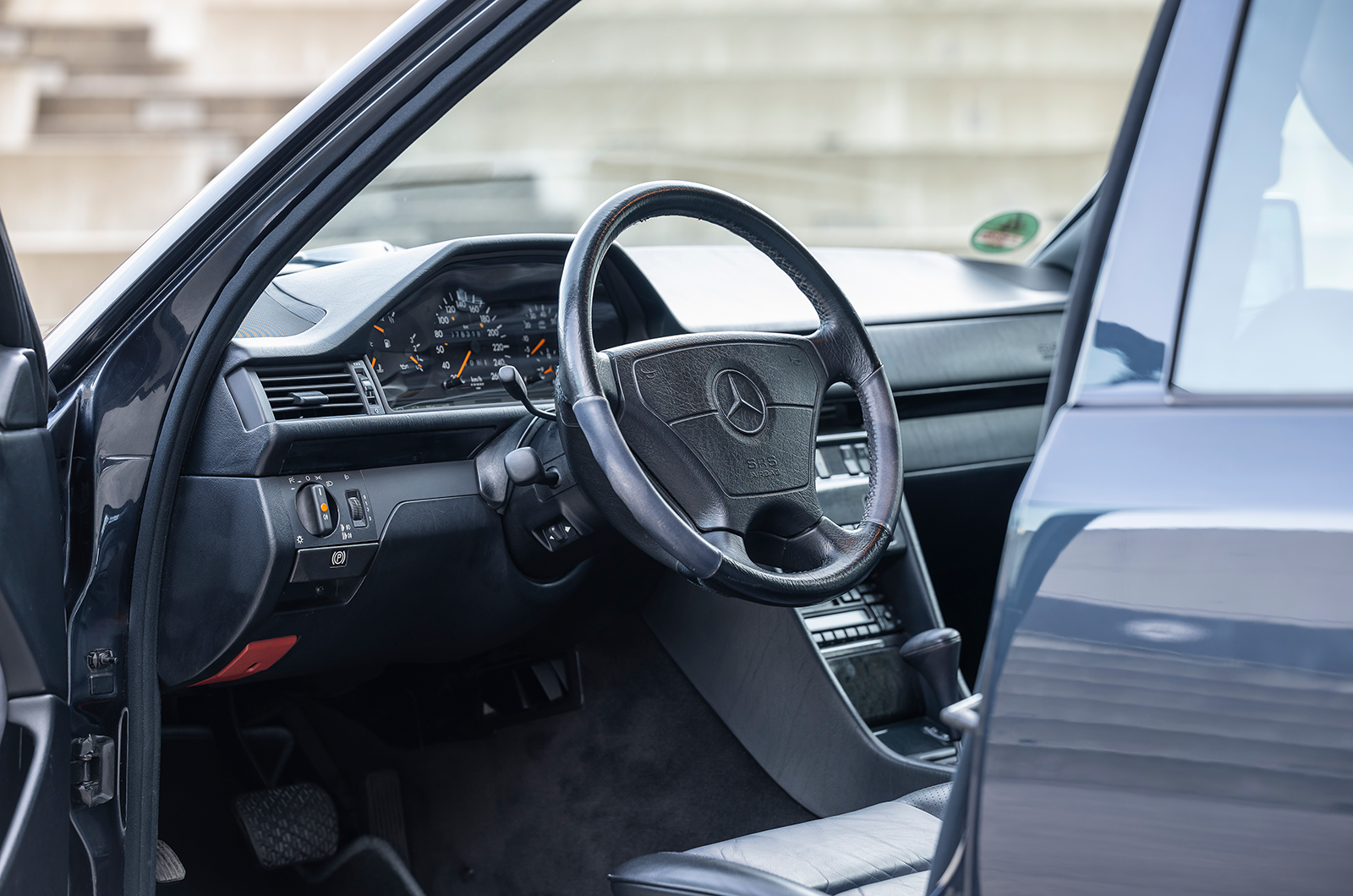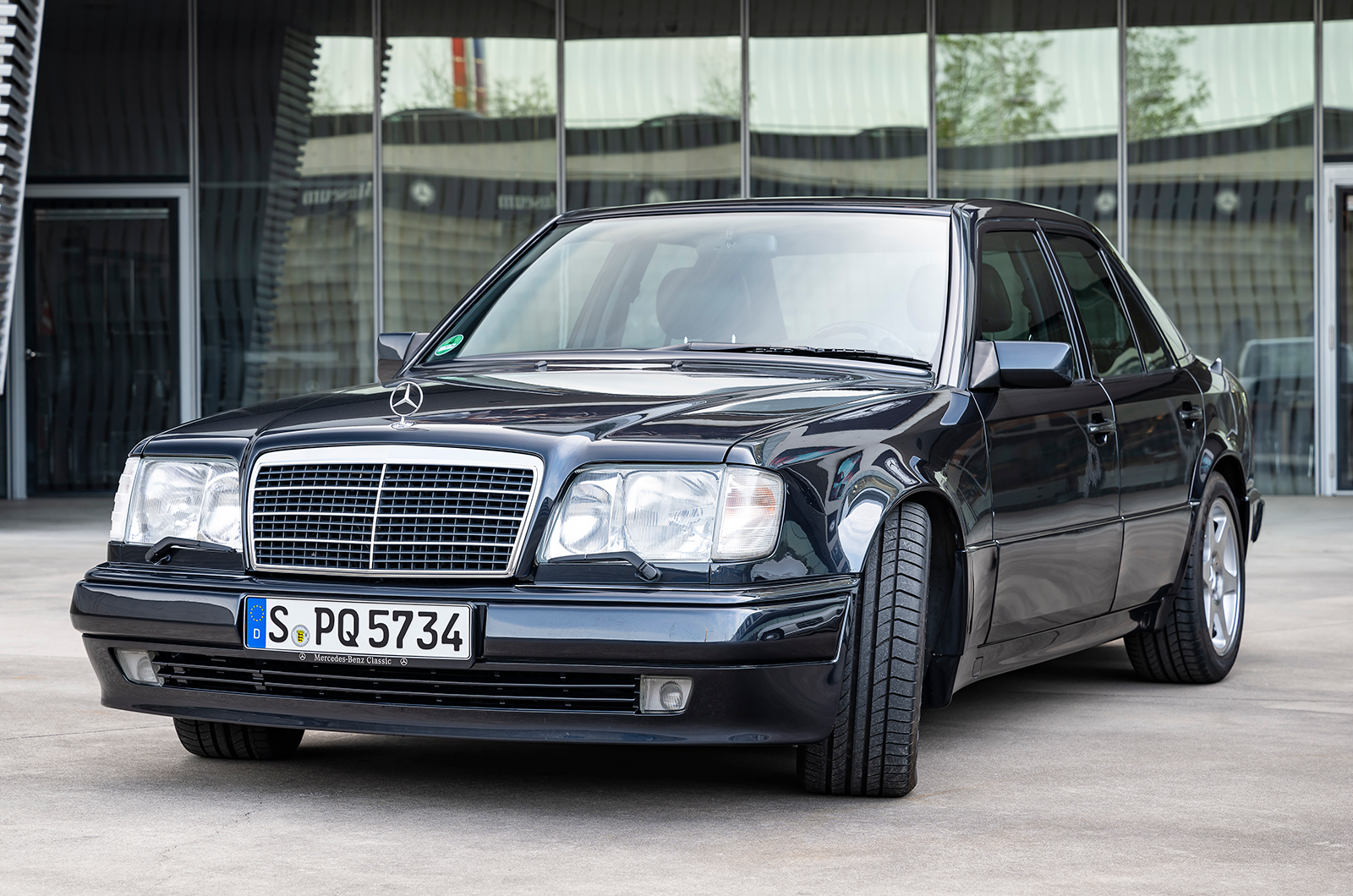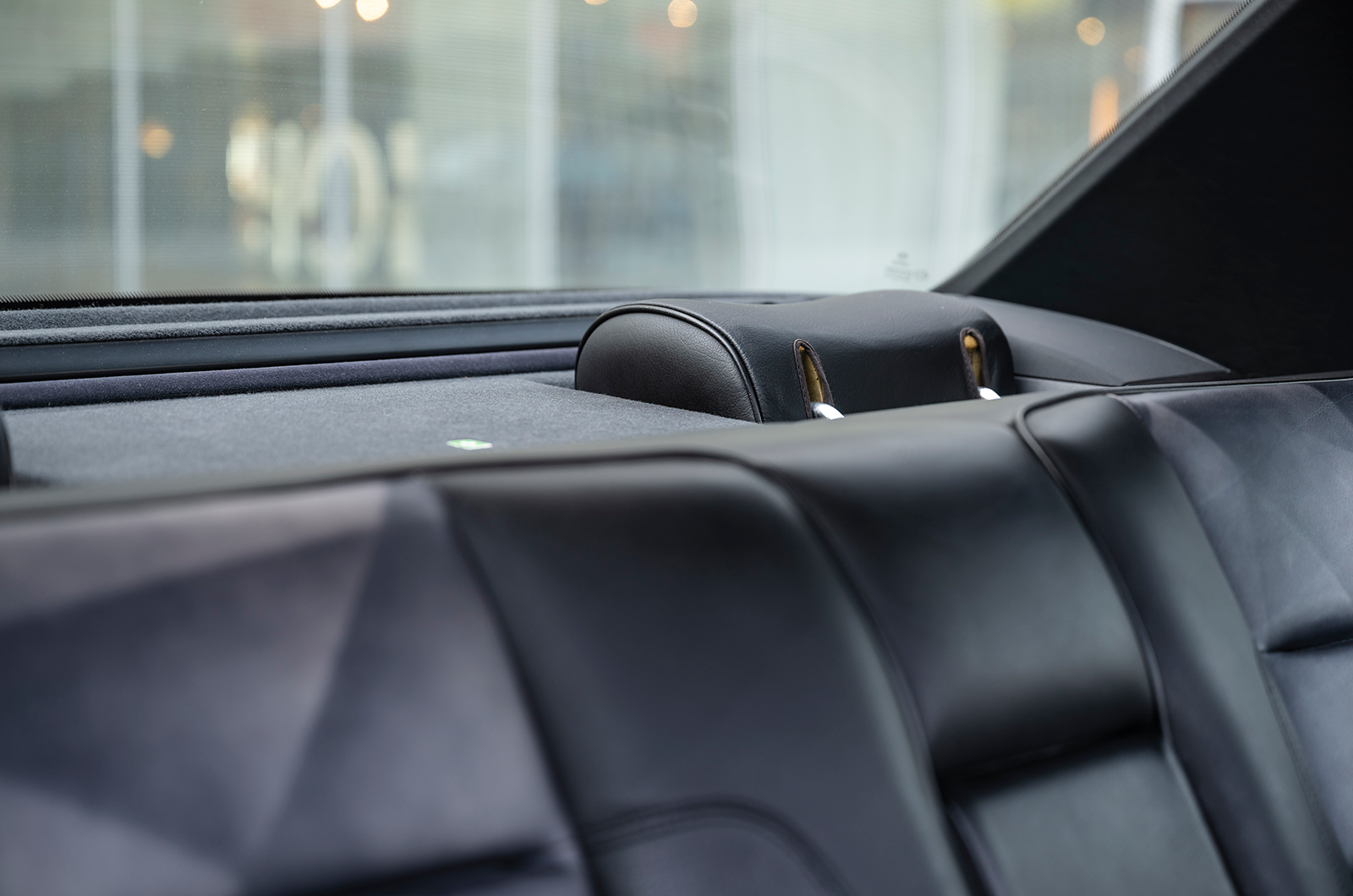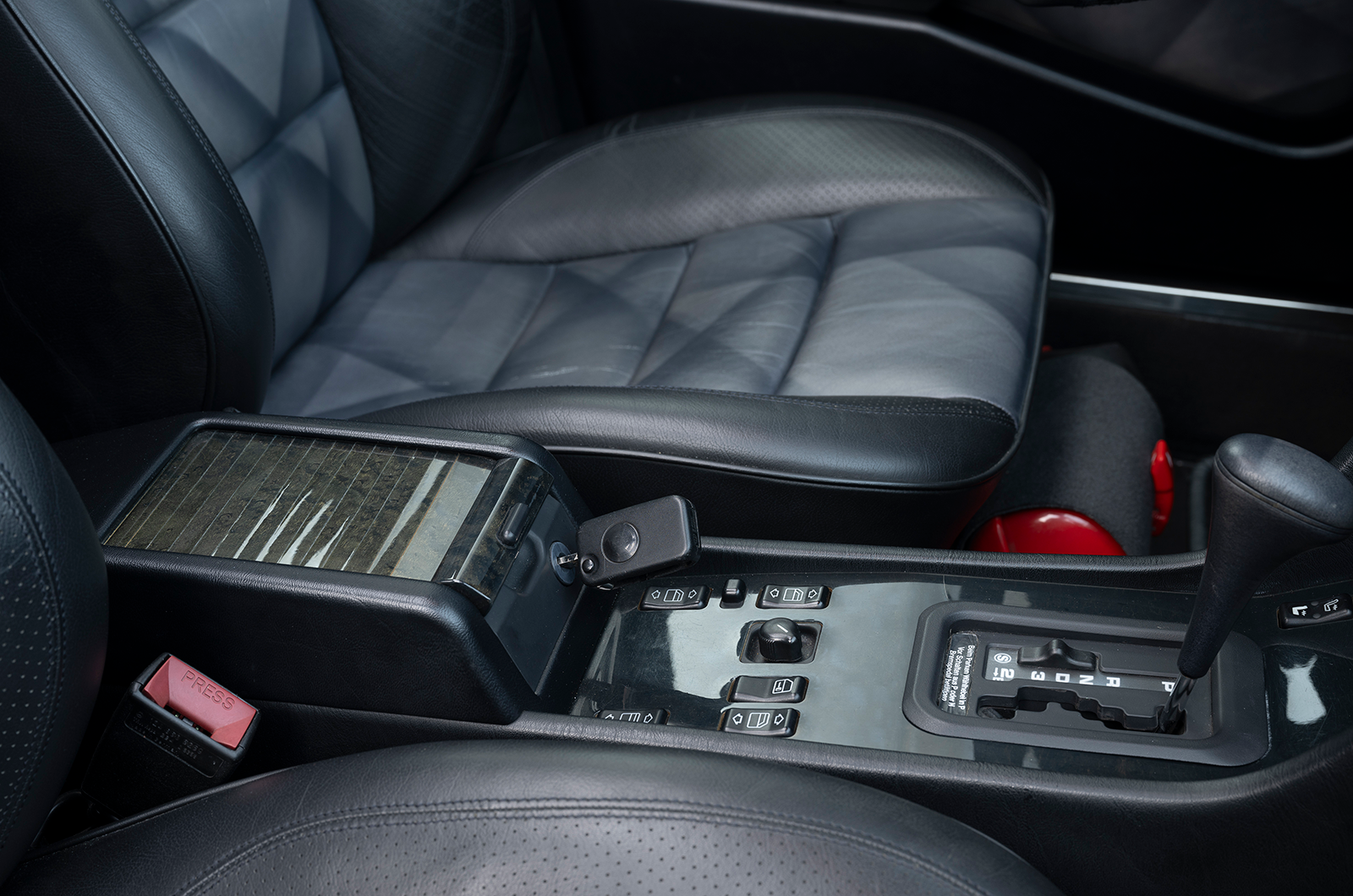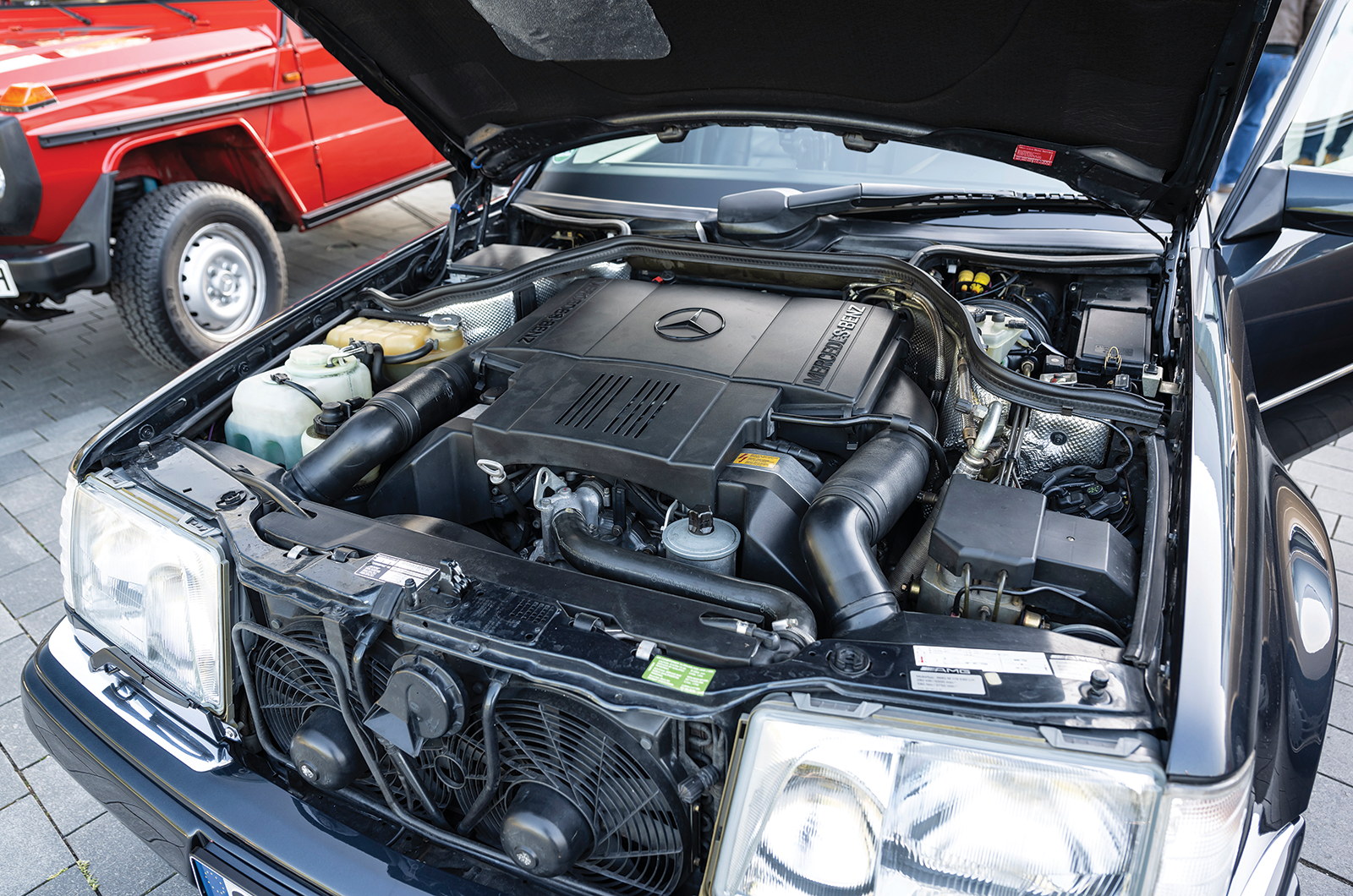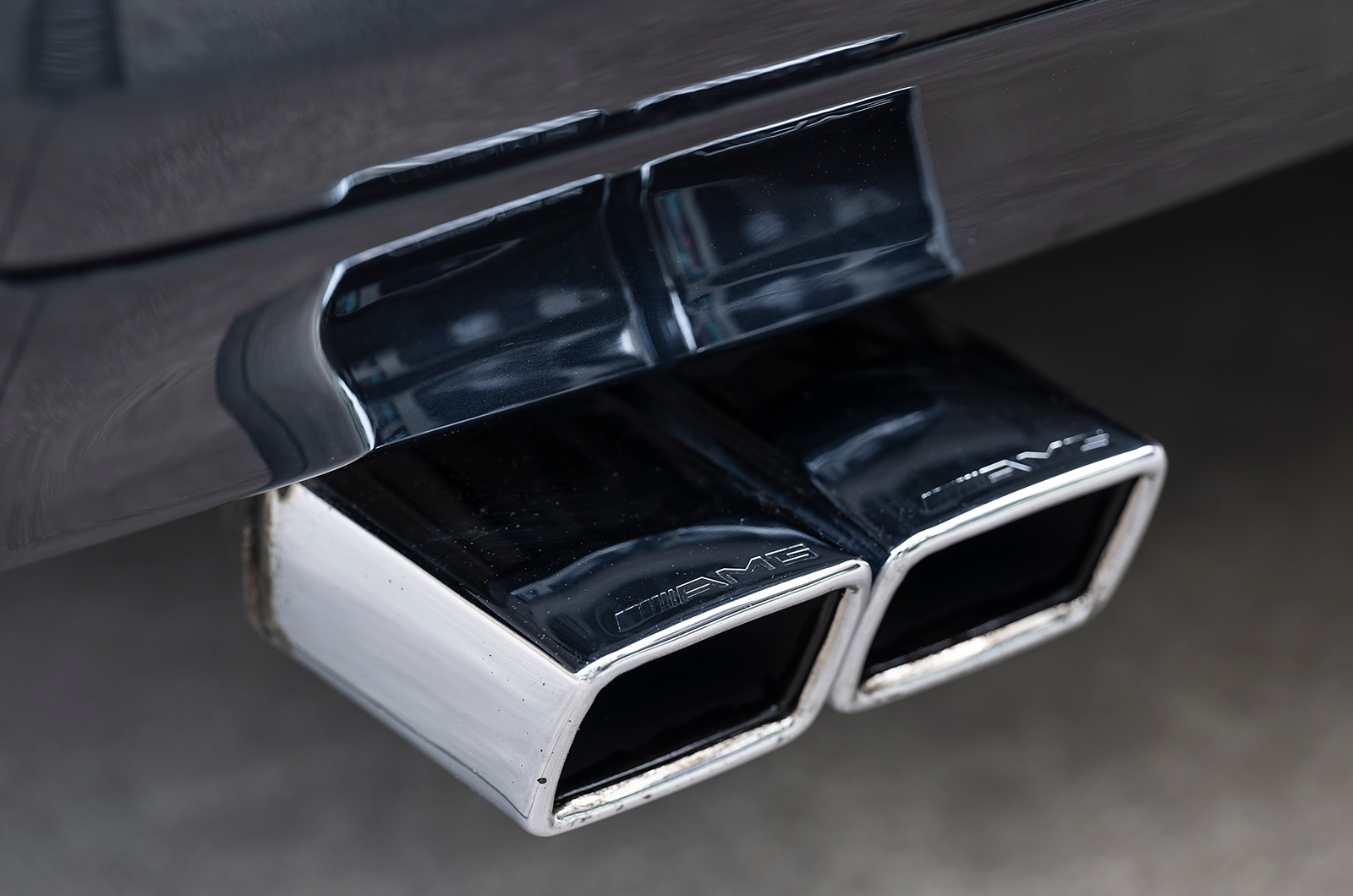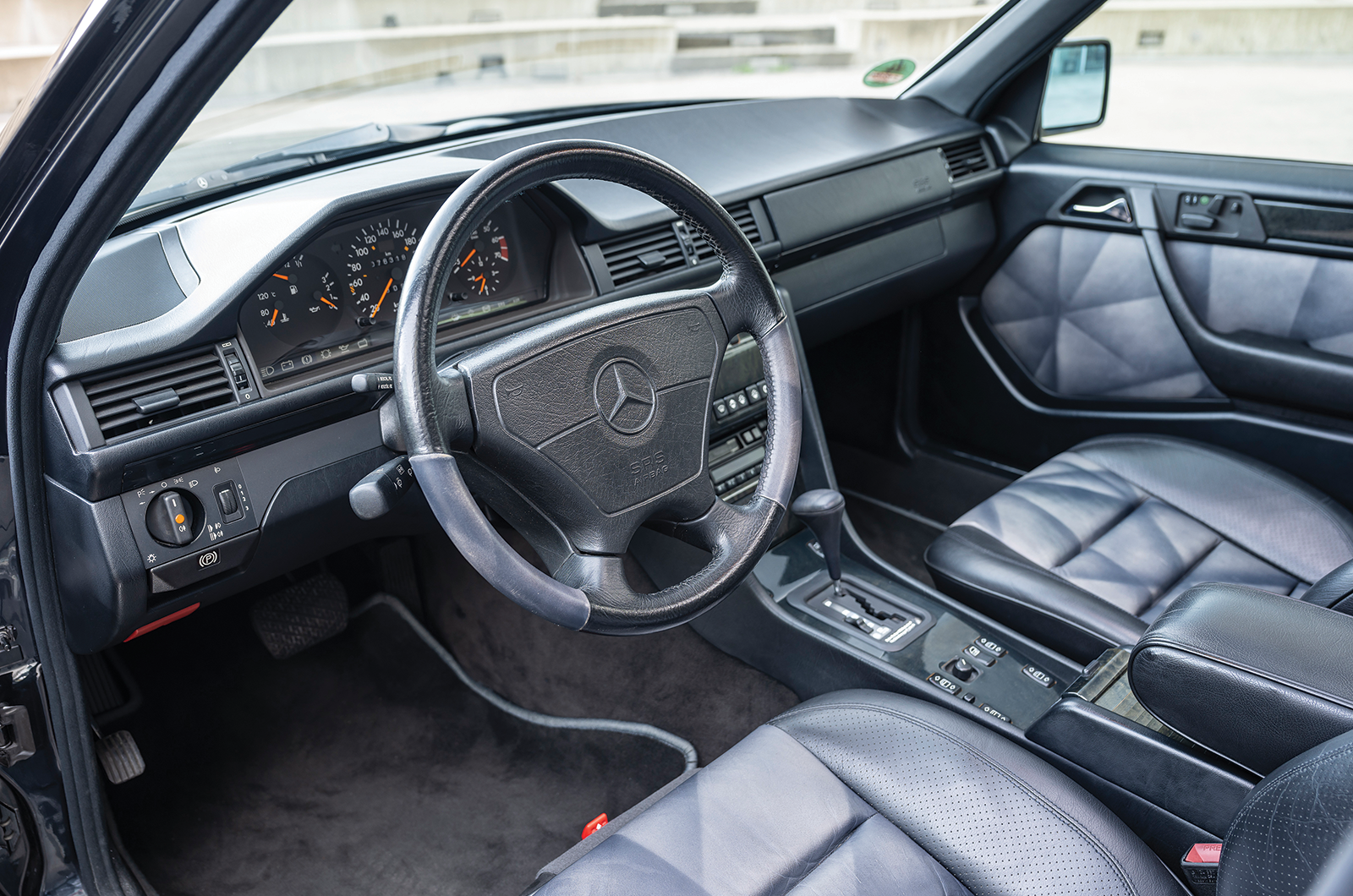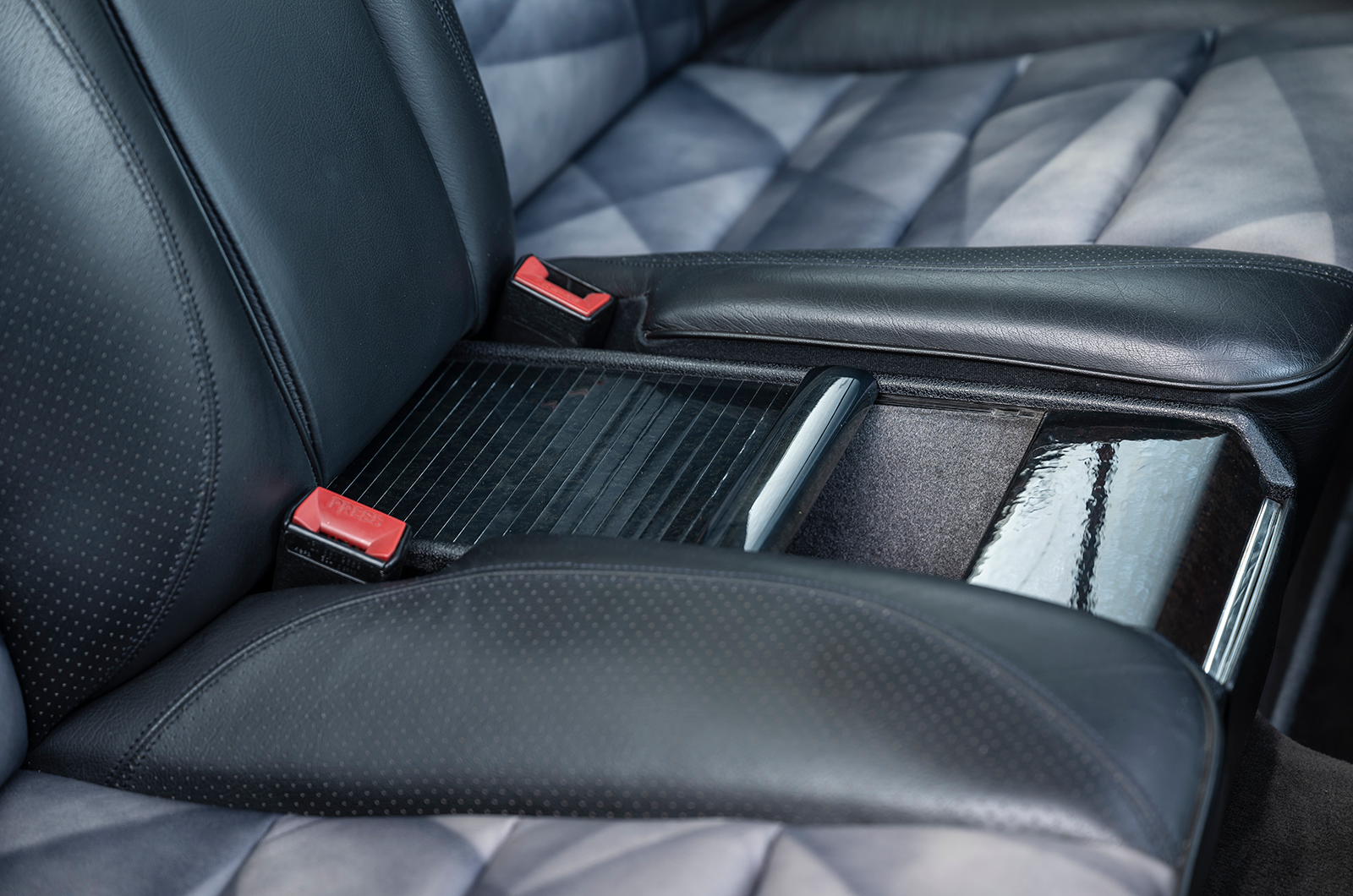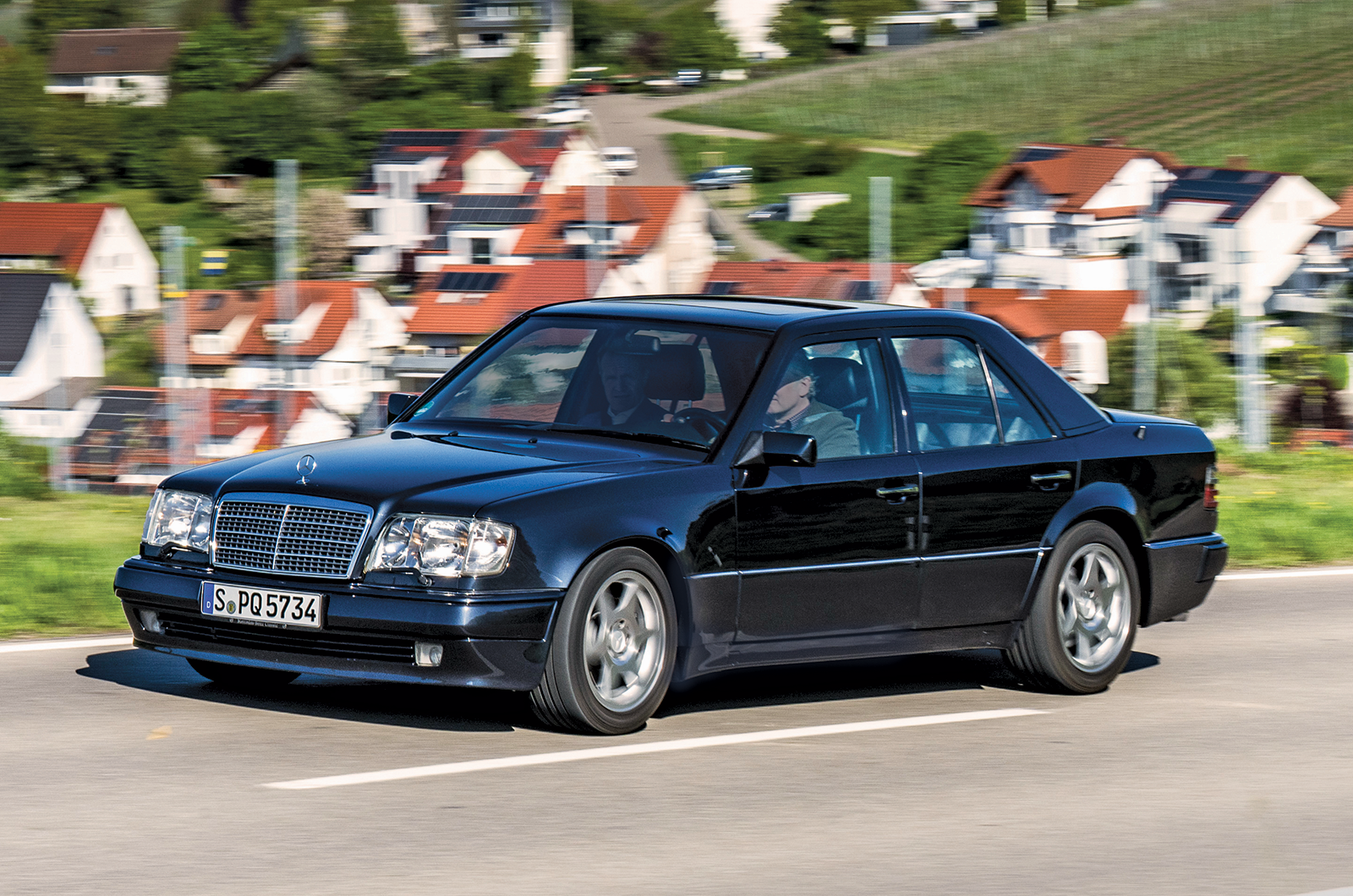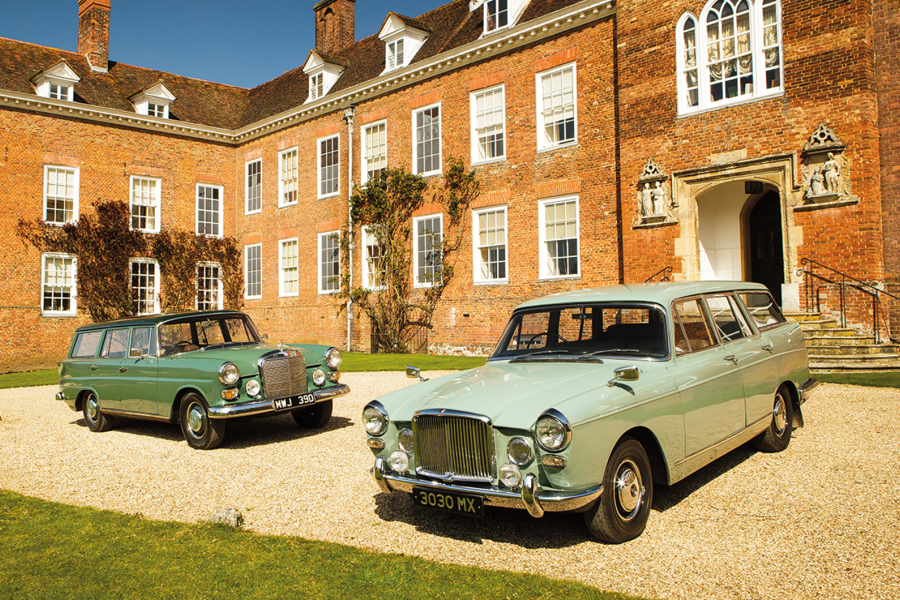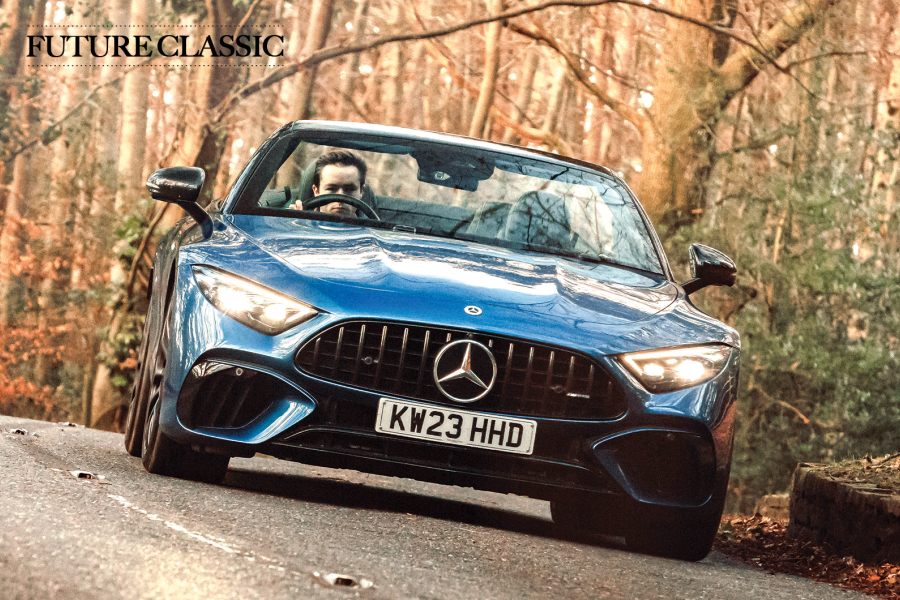No drama and no wheelspin, but more than enough wholesome thrust to rearrange the internal organs.
The Mercedes-Benz E60 AMG has a wider track than the standard 124-series saloon
That said, you don’t get the same exquisite sense of a huge, understressed engine as you do in the 6.3 and 6.9.
The AMG’s 6-litre, four-cam, variably timed V8 is an engine that can wind out to 6200rpm with a sophisticated – but muted – multi-valve growl, pinning you back in your seat to well in excess of 130mph, which it will achieve in less than half a minute.
Real urge doesn’t begin until 3800rpm, so for truly brisk driving you have to be prepared to rev the engine quite hard, but that’s no hardship with a close-ratio auto ’box that blends changes beautifully and allows instant access to kickdown violence on request.
Slow, tight corners aren’t as much fun as they might be in the E60.
The wagging finger of the ASR takes charge of events before anything interesting can happen, chaperoning access to power with a flashing yellow triangle on the dash when temptation is put in your path.
The Mercedes-Benz E60 AMG’s traction-control system reins in the fun in tight turns
I was once told a well-placed paperclip can take ASR out of the loop, but I probably wouldn’t bother.
Through fast corners the car’s poise, lack of roll, pleasantly meaty – if not pin-sharp – steering, supple ride and general willingness to soak up great distances at high speed in an aura of calm more than make up for its reluctance to go sideways.
(Not something in which you need to indulge in a car such as this anyway.)
It would be wrong to think of the E60 as a hot rod: it was far too carefully engineered to be considered in any way homespun.
Driven gently, the AMG W124 is peaceful inside, with the sober furnishings and sense of solidity that were once the Benz trademark, before a dark period of pound-shop build quality in the mid-2000s.
It appeals for most of the same reasons as the 6.3 and 6.9, but, while you can sense the earlier cars in the E60’s make-up, it is a much more sensible vehicle to own because, in the end, it is still a W124 saloon.
Images: Tom König/Pierre Johne
Thanks to: Mercedes-Benz Classic Center
The ‘Hammer’: AMG’s early adrenalin hit
The ‘Hammer’ is one of the most famous pre-merger AMGs
AMG had been in the ascendancy for 10-15 years by the time the W124 appeared, but it was its V8-engined 300E saloons that really made its reputation as a maker of hotted-up road machinery, eventually leading to the acquisition of the firm by Mercedes in 1999.
About 30 of these AMG W124s were built, the ‘Hammer’ name being officially adopted after comments in the German motoring press.
The cars got some excellent column inches in North America, too, where it didn’t go unnoticed that the 5.6-litre version had 125bhp more than a Corvette, thanks to a polished, blueprinted and balanced version of Daimler-Benz AG’s 5.5-litre M117 V8.
AMG’s four-cam, four-valve cylinder heads boosted power to 355bhp, or 375bhp in 6-litre form.
AMG’s ‘Hammer’ is a lot less subtle than the inconspicuous Mercedes-Benz E60
Maximum speed ranged from 178-185mph, with 0-60mph in just 5 secs and the standing quarter-mile in 13.5 secs at a 107mph terminal velocity.
In other words, the Hammer was as fast – or faster – than most of the two-seater Italian exotica available at the time, and thus the quickest saloon commercially available.
One estate was also produced, along with probably only a handful of CE coupés.
The fastest, yes, but also one of the most expensive, at up to $180,000.
For that you got a suitably beefed-up drivetrain, stiffer, shorter springs and a choice of aerodynamic addenda, the most flamboyant of which set the drag coefficient at 0.35Cd.
Enjoy more of the world’s best classic car content every month when you subscribe to C&SC – get our latest deals here
READ MORE
The best supersaloon you’ve never heard of: Mercedes-Benz E500
Mercedes-Benz 300SEL 6.3 vs Jensen FF: inconspicuous consumption
Mercedes-Benz W123: some things were built to last
Martin Buckley
Senior Contributor, Classic & Sports Car



